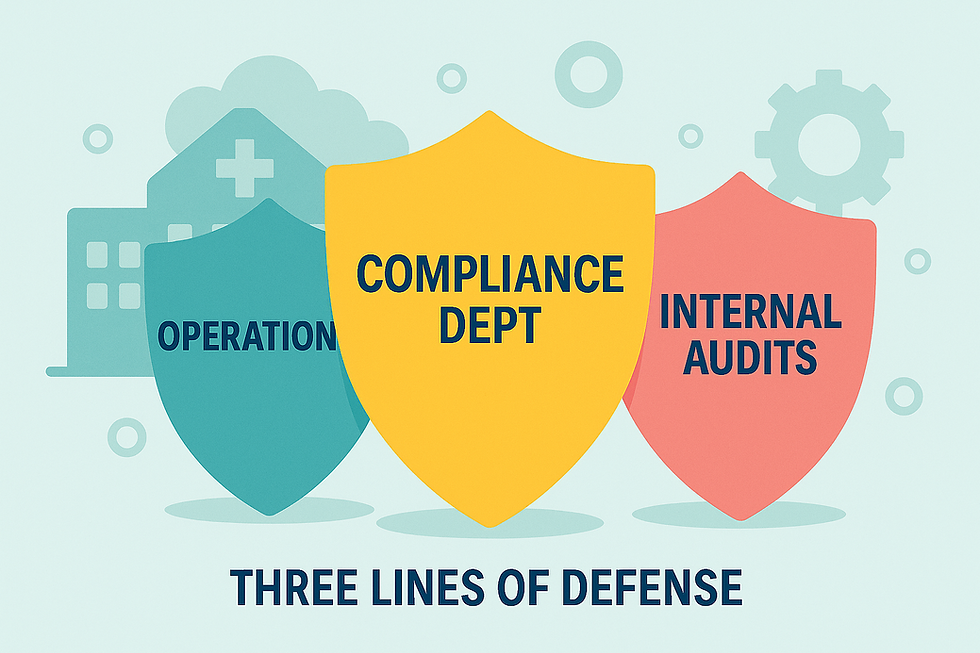CMS Proposes a 6.4% Home Health Cut: What It Means for Your Compliance Program
- Jessica Zeff

- Jul 1
- 2 min read
What Did CMS Propose?
On June 30, 2025, CMS released the CY 2026 Home Health Prospective Payment System (HH PPS) Proposed Rule, projecting a net 6.4% payment cut (~$1.13 billion) to home health agencies in 2026. This includes:
+3.2% market basket update, reduced by
–0.8% productivity cut → +2.4% net update for agencies reporting quality data.
–4.059% permanent PDGM adjustment (CMS asserts Medicare has been overpaying since PDGM implementation).
–5% temporary payment cut to recoup “past overpayments.”
–0.5% outlier payment adjustment to maintain outlier spending at 2.5%.
Additional Proposals:
PDGM recalibration of case-mix weights, comorbidity groups, and functional scoring using updated 2024 data.
Expanded practitioner eligibility for face-to-face encounters to align with CARES Act flexibilities.
Continuation of the 5% cap on negative wage index changes to stabilize payments in affected areas.
Industry Response: Alliance for Care at Home
The Alliance for Care at Home warns the proposed cuts are “catastrophic,” emphasizing they could:
Force agency closures,
Deepen care deserts in rural and underserved areas, and
Reduce patient access to home-based care.
They argue that CMS’s own data shows total Medicare home health expenditures have declined since PDGM’s implementation in 2020, directly challenging the rationale for the payment cuts.
Industry Response: American Hospital Association
The AHA expressed serious concern that the 6.4% cut will jeopardize patient access to home health, particularly for those transitioning from hospital to home, increasing the risk of fragmented post-acute care.
Additionally, the AHA highlighted:
HH Quality Reporting Program (QRP) changes:
Removing the COVID-19 vaccination measure.
Removing four standardized OASIS items related to food, utilities, and living situation.
Seeking feedback on digital submission expansion and submission deadlines.
HH Value-Based Purchasing (VBP) changes:
Adding four new measures, including Medicare Spending Per Beneficiary and three functional improvement measures (dressing, bathing, toileting).
The AHA emphasized these changes will require agencies to adjust their quality reporting and data collection processes while navigating the proposed financial cuts.
What Should Compliance Teams and Leaders Be Doing Now?
1. Financial Modeling & Risk Assessment
Assess the impact of the 6.4% cut on operating budgets and service capacity.
Identify potential service reductions, geographic contraction, or staffing impacts.
2. PDGM Documentation Audit
Ensure accurate OASIS coding, functional scoring, and comorbidity documentation.
Review alignment with PDGM recalibration proposals to prepare for possible audits.
3. QRP & VBP Readiness
Remove the COVID-19 vaccine measure and applicable OASIS items from reporting workflows.
Begin tracking data for proposed Medicare Spending Per Beneficiary and functional measures.
Monitor CMS decisions on digital submission requirements and timelines.
5. Hospital & Community Partnerships
Communicate with hospital discharge planners and community partners about potential service adjustments, ensuring transparency in patient care transitions.
CMS’s proposed rule arrives as home health demand rises while workforce and inflation challenges persist. While CMS frames these cuts as fiscal alignment, the Alliance and AHA emphasize the real risk of reduced access, agency closures, and increased strain on hospitals and families.
For compliance teams, this moment calls for proactive financial modeling, documentation accuracy checks, QRP/VBP readiness, and clear communication about changing goals.
Do you have questions about this blog? Please contact jessicazeff@simplycomplianceconsulting.com
— Jessica




Comments